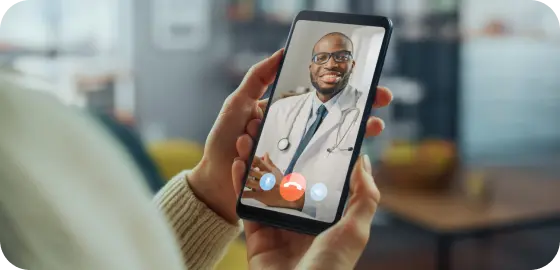As the landscape of healthcare evolves, telehealth emerges as a critical component of patient care. The art of communication, while always crucial in healthcare, becomes even more significant when consultations and care transition to a virtual environment. This blog post is dedicated to unraveling the intricate tapestry of communication skills necessary for healthcare professionals to deliver exceptional care from afar. We’ll navigate through the nuances and challenges of remote patient management while aiming to equip healthcare providers with the tools to maintain a standard of care that not only matches but often surpasses in-person interactions.
The Importance of Strong Communication in Telehealth
The shift to telehealth is not merely a change in medium—it’s a complete transformation in how healthcare professionals interact with their patients. Clear and effective communication between providers and patients is always foundational to positive health outcomes, but it becomes even more important in virtual appointments, where traditional, in-person social cues aren’t available. This is especially true for vulnerable populations, such as the elderly, who may have spent a limited amount of time interacting with people online.
Building Trust From a Distance
Building trust is a necessity in any patient-provider relationship. In a telehealth context, this trust is cultivated through the screen. Without the reassuring touch or the physical presence that often comforts patients, healthcare professionals must rely on tone of voice, attentive listening, and a display of genuine empathy to reassure patients.
Trust is not just a nice-to-have; it’s essential. A survey by American Well in 2019 found that a staggering 76% of patients place a higher value on access to care over in-person interactions with healthcare providers. This statistic underscores the importance of mastering virtual communication to build and maintain trust, even when miles apart.
Clarity and Conciseness
The virtual environment demands clarity and precision in communication. Instructions and care plans need to be presented in a way that is easily digestible and free from ambiguity. Healthcare professionals must be skilled in simplifying complex medical jargon into clear-cut information, ensuring patients have a thorough understanding of their treatment.
Non-Verbal Cues and Digital Body Language
Non-verbal communication is a subtle yet powerful aspect of patient interactions. On video calls, non-verbal cues can convey understanding, empathy, and attention. Healthcare providers must be adept at reading and expressing these cues digitally. Moreover, digital body language, such as the timing of responses and the structure of messages, plays an integral role in telehealth and must be navigated with care.
Essential Communication Skills for Telehealth
As telehealth becomes a staple, there are specific skills that healthcare professionals should hone to ensure success in remote patient management.
Active Listening and Patient Engagement
Active listening is paramount in telehealth. These skills are about fully concentrating on the patient when they speak, understanding their concerns, and responding thoughtfully to each one of their points. Active listening builds rapport and ensures that patients feel heard and valued. Engaging patients in their care through this approach can lead to better health outcomes. In fact, Health Affairs reported in 2017 that patients who are actively engaged in their healthcare are 50% more likely to experience positive outcomes.
Technical Proficiency and Usage of Telehealth Platforms
Navigating telehealth platforms with ease allows healthcare providers to focus on the patient rather than the technology. Proficiency with these tools not only streamlines the process but also helps patients feel more at ease when using the technology themselves.
Cultural Competence in a Digital Realm
Telehealth has the power to cross borders and connect providers with a diverse patient population. Cultural competence remains as important as ever, ensuring communication is respectful and sensitive to cultural differences. Training in cultural competency has been shown to be effective, with The Commonwealth Fund highlighting a 29% increase in patient satisfaction scores when such training is implemented.
Elevating Telehealth With Aetonix
In conclusion, effective communication is the cornerstone of successful telehealth. It’s about building trust, ensuring clarity and understanding, and engaging with patients in a manner that honors their unique needs and cultural backgrounds. At Aetonix, we understand the challenges healthcare providers face in a digital healthcare landscape. We are committed to empowering providers with innovative solutions that enhance remote patient care.
Thank you for reading. To stay up to date on current healthcare topics and news about Aetonix, subscribe to our mailing list at the bottom of our blog page. Connect with us on social media using the links at the bottom of this page and share your thoughts!


